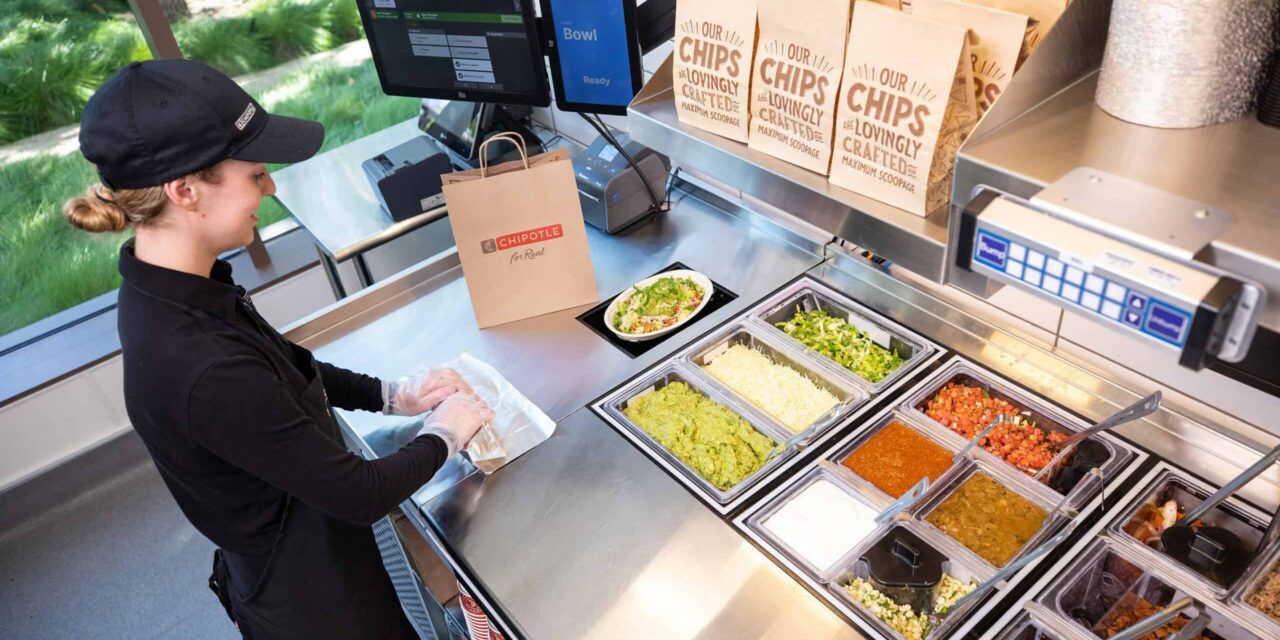Image Courtesy of Chipotle
By Tom Ryan
Source: retailwire.com, September 2024
A recent survey found that 55% of global consumers agree automated food preparation is unacceptable for both quick-service and table-service restaurants.
Only a small minority of respondents in the survey from Software Advice were open to robot servers at quick service restaurants (30%), and even less so for table service (10%). Overall, 67% agreed that human-centered customer service at restaurants is “very important,” more than double the 31% claiming the same of retail and grocery stores.
On the favorable side, automation that can speed up wait times and make personalized recommendations based on past orders was found to be increasingly welcomed by many. Among the survey respondents, 49% were likely to order food through an AI tool, such as a chatbot or drive-thru.
The debate continues over how much automation will be acceptable as part of the dining-out experience as restaurants keep testing new technologies.
Chipotle last week said it was testing two machines in its restaurants for the first time, including one that can cut, core, and peel avocados in 26 seconds on average, halving the time it takes human workers to make guacamole. The second builds bowls and salads, which make up 65% of the chain’s digital orders, while employees focus on making burritos, tacos, quesadillas, and kids’ meals.
Curt Garner, chief customer and technology officer at Chipotle, said, “Optimizing our use of these systems and incorporating crew and customer feedback are the next steps in the stage-gate process before determining their broader pilot plans.”
Sweetgreen, White Castle, McDonald’s, and Denny’s are among food establishments also experimenting with automated cooks and servers.
With questions framed differently to point out robotics’ potential benefits, a survey of over 1,000 U.S. adults from kitchen robot maker Nala Robotics taken in 2022 found that 60% of respondents said food cooked by a robot would be the same or better than that prepared by a person.
The top perceived dining benefits of robotic chefs included:
- Hygiene (contactless, human touch-free food handling), 58%
- Consistency (no missing ingredients, dishes prepared as intended), 56%
- Speed (food arrives quickly), 54%
- Cost (decreased restaurant operational costs means lower-priced dishes), 45%
- Cross-contamination (avoids spread of harmful bacteria and allergy-causing foods), 32%
Sharon Zackfia, a restaurant analyst at William Blair Equity Research, recently told the Wall Street Journal that rising labor costs will drive more automation in restaurants in the next decade, likely following a similar adoption pattern as online ordering.
Still, a recent New York Times article indicated that one hurdle around restaurant automation is people wanting to connect with humans while dining out. The article stated, “They want to encounter people, not a chatbot, kiosk or mechanical arm. So successfully integrating robots is more than just an engineering challenge.”
Many restaurant owners appear to agree on the importance of human touch.
Capterra’s 2022 Restaurant Automation Survey of 174 restaurant professionals found that most restaurants (76%) were already using automation in three or more areas of operation and agreed that certain roles are more automatable than others.
When asked which human roles cannot be easily replaced by using today’s automation technology, the top roles seen as irreplaceable were chef/cook, cited by 76%; followed by managerial staff, 68%; waitstaff/server, 56%; and bartender/barback, 53%. Hosts, baristas, and drive-thru operators were seen as more easily replaced, and in some cases improved, by automation technology.
“Chef robots are currently very limited in their capabilities (e.g., mixing beverages or operating deep fryers),” Capterra said. “Managers, waitstaff, and bartenders add a personal touch to diners’ experiences and take a unique skill set not offered by current robotic solutions.”

